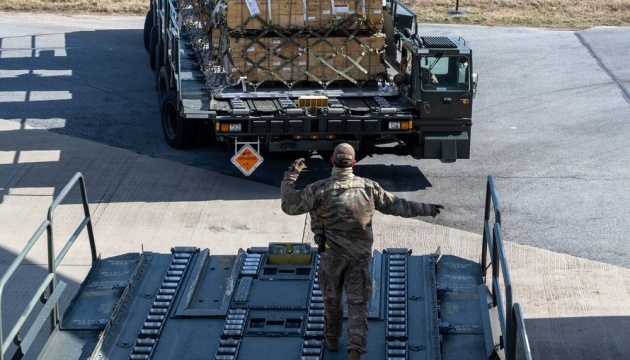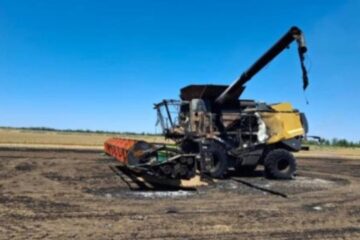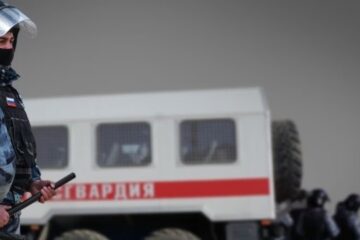As the United States halts missiles and ammunition shipment, Ukraine is getting to seek fundamentally new ways to survive and win
The US decision to indefinitely suspend deliveries of Patriot missile interceptors and other precision munitions to Ukraine has come as a cold shower to many. The delayed shipment includes dozens of Patriot interceptors, thousands of 155 mm Howitzer shells, over 100 Hellfire missiles, more than 250 GMLRS precision-guided systems, AIM air-to-air missiles, grenade launchers and various other air and ground munitions, according to the Ukrainian think tank Defense Express. An important nuance: these supplies are not coming from drawdowns on current stockpiles, but were previously approved under the Presidential Drawdown Authority and the Ukraine Security Assistance Initiative under the Biden administration. The move has echoes of the Trump administration’s decision to redirect key munitions, including artillery shells, tank gun rounds, and air defense systems promised to Ukraine back to the U.S. homeland or to Israel.
Russia over the weekend launched its biggest aerial attack on Ukraine since the start of the three-year war, with a reported 477 drones and decoys and 60 missiles. Of these, 249 were reportedly shot down and 226 were lost, likely having been electronically jammed.
The move comes after Ukrainian President Volodymyr Zelensky met with Trump on the sidelines of the NATO summit in the Netherlands last week. The U.S. president, who has been repeatedly frustrated in recent weeks by Russian President Vladimir Putin’s reticence to come to the bargaining table to end his war on Ukraine, emerged from the meeting more sympathetic to Kyiv’s cause than before — and did not rule out sending more Patriot air defense systems — despite the Pentagon’s decision to freeze some aid, including anti-aircraft and anti-missile systems.
The political reasons behind such a decision are a topic for separate discussions, and much may change after the conversation between the presidents of Ukraine and the United. Perhaps the parties have agreed to resume aid. Or Kyiv has offered Washington direct purchases of weapons or a scheme under which European countries would buy American weapons for Ukraine. However, if none of these options work (or work for a short time and Trump and his administration will make some surprise moves again in a few days/weeks), we will have to find a way out on our own.
That is why we are interested not so much in politics as in pragmatism. How critical is the lack of American weapons for Ukraine? What options exist? Are there real alternatives that can replace American weapons? If so, what exactly and where to look for them? Experts are unanimous that supplies from the United States would be impracticable to fully replace in the short term. However, in the long term, provided that the European defense industries ramp up production and Ukraine boosts its domestic defense industrial capacity, Kyiv will be able to reduce the problem to the minimum.
HARD-TO-REPLACE TECHNOLOGIES AND AIR DEFENSES’ “ACHILLES HEEL”
The termination of American aid is an asymmetric threat. While the shortage of some types of weapons can be compensated, the loss of others creates gaps that are practically impossible to fill in the short term. This primarily concerns two systems that once changed the rules of the game on the Ukrainian battlefield: the Patriot missile interceptors and the HIMARS MLRS.
The defensive missile shield under threat
The most painful blow is the cessation of Patriot interceptor missile supplies, most particularly the PAC-3 MSE interceptors. Defense analyst Mykhailo Samus is categorical in his assessment, saying, “The Americans provided Ukraine with a one-of-a-kind Patriot system – thus far, it is the only system capable of effectively intercepting ballistic missiles.” These systems protect us from Russian Iskander and Kinzhal missile attacks. As defense analyst Mykhailo Zhirokhov notes, if Patriot supplies are ceased, “large Ukrainian cities (first of all, Kyiv) would suffer significantly from missile strikes.”
The problem is not only in the uniqueness of the Patriot system, but also the extremely limited production of related missiles. Aviation expert Kostyantyn Kryvolap gives disappointing arithmetic: “The Russians are capable of producing about 18 Kinzhal and Iskander-M aeroballistic missiles per month. To shoot down 18 such missiles, at least twice as many Patriot missiles are needed – 35-36. And there are not that many of them manufactured worldwide.”
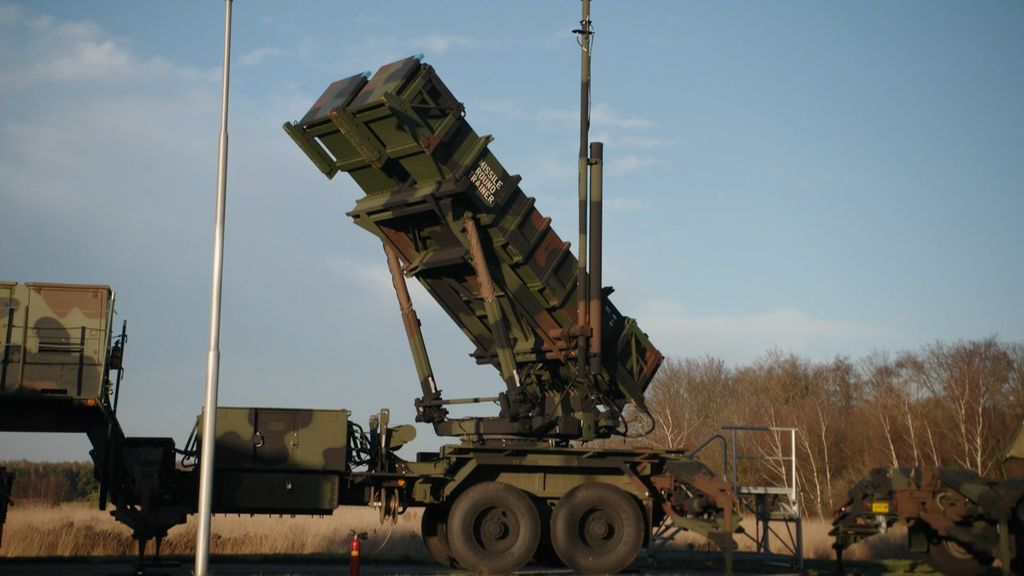
Patriot ground-to-air guided missile defense system
Oleh Katkov, editor-in-chief at the defense think-tank Defense Express, explains why production is hard to shore up quickly. According to him, the manufacturer Lockheed Martin has reached a yearly output of 600 PAC-3 MSE interceptors, and this is after a significant production acceleration. The trouble is in the supply chains. “When it comes to increasing weapons production, it is always a matter of a kind of synchronous running in formation,” explains Katkov. “In order for Lockheed Martin to produce more missiles, it must have more radar homing heads produced by Boeing. It must obtain more solid-fuel engines… If a missile consists of 1,000 assemblies, then they are supplied, hypothetically, by 100 companies, meaning all the 100 assembly providers have to speed up production synchronously.”
Because of this dependence on American components, according to Katkov, reliance on Japan, which produces about 30 missiles per year under license, is also futile as it doesn’t produce it domestically but only assembles it from American components.
Surgical precision of HIMARS
The second critical shortage is of GMLRS missiles for HIMARS systems. Military expert Pavlo Narozhnyi emphasizes their irreplaceability for defeating mobile, time-sensitive targets. “80-km-range GMLRS missiles for HIMARS systems are a key tool for defeating targets such as Russian artillery pieces or Iskander missile launchers. Capable of Mach 3 speed, Iskander missiles fly 80 km in 3 minutes. It takes a strike drone 20 minutes to reach this distance, during which the target can shoot back and change location,” he notes, concluding: “There is no alternative to GMLRS.”
Mykhailo Zhirokhov shares this assessment. He reminds that it was the coming of HIMARS systems that helped us locally turn the situation around and switch on to the offensive in the Kharkiv and Kherson directions. The loss of these capabilities, in his opinion, will mean that “Russia will receive significantly more room for maneuver with rear-area reserves.”
Thus, it is precisely in the fields of missile defense and high-precision long-range strikes where Ukraine’s dependence on American aid is complete. And it is here where the search for alternatives is most challenging.
“PLAN B”: EUROPEAN SHOULDERS, DOMESTIC DEFENSE INDUSTRIAL DEVELOPMENT AND CREATIVE SOLUTIONS
Whereas it is impossible to replace Patriot and HIMARS “here and now”, the situation with other capability gaps does not look that apocalyptic. Replacement of American aid will require the synergy of three key components: maximum possible involvement of the European partners’ potential, accelerated growth and expansion of Ukraine’s domestic defense-industrial capacities and capabilities, and tactical flexibility on the battlefield.
European equivalents: potential and limitations
In the niche market for missile defense systems, the closest European equivalent to the Patriot is the Franco-Italian SAMP-T system. However, as military expert Serhiy Zghurets notes, there are serious problems with it. “We have only two SAMP-T batteries, and the trouble is that the rate of related missile production is extremely slow… there are too few of these systems available, and the number of related missiles is even lower than for the Patriot,” he says. Mr. Zghurets adds a somewhat ironic detail about the logistics of production: due to the reluctance of France and Italy to concentrate assembly operations in one country, the components “actually have to be dragged across the Alps,” which does not speed up the process at all.
At the same time, according to Mykhailo Samus, the current crisis may push Europe to act. “European countries, especially Germany and Poland, may have to reconsider their dependence on American supplies and invest seriously in the production of SAMP-T’s to serve as a missile shield of their own. In the longer term, this would benefit Ukraine as well, as this could result in the emergence of a powerful European manufacturer of missile defense systems, independent of political cycles in the United States.
The situation is better with other air defense capabilities. According to Mr. Samus, systems like NASAMS are functionally interchangeable with the German IRIS-T, which does not create a “critical bottleneck”.
According to Mykhailo Zhyrokhov, the shortage of missiles for the Stinger MANPADS may become critical for front-line air defenses. However, Ukrainian ingenuity comes to the rescue here. The expert recalls the FrankenSAM, a collaborative Ukraine-US project to create hybrid air defense systems. The FrankenSAM systems were created by making modifications to Soviet-era missile launchers or radars that were already at Kyiv’s disposal. One combination includes tweaking the Soviet Buk launcher to fire the American RIM-7 Sea Sparrow missile. Another involves combining Soviet-era radars with U.S. Sidewinder missiles. One FrankenSAM system modification would combine a U.S.-made Patriot missile and launching station with an older, Ukrainian-made radar system. “Ukraine has got engineering documentation for the FrankenSAM air defense systems… and is now able to implement these systems on its own… As of now, three variants of FrankenSAM air defense systems are known: “short-range”, “medium-range” and “long-range”…, all using the AIM-9M Sidewinder, R-27 and RIM-7 air-to-air missiles.” This allows existing Western missiles to be adjusted to Soviet launchers and thus compensate for the shortage of ammunition.”
Artillery shortage: shells versus barrels
Another acute shortage is of 155-mm artillery shells, of which the United States used to be a key supplier. Mykhailo Samus recalls the crisis with American supplies in early 2024, which eventually led to an acute shortage. However, the expert argues, “the situation has changed since then.” European manufacturers are increasing production, and Ukraine, too, is gradually increasing its domestic production capacity, while the “Czech initiative” has allowed hundreds of thousands of shells to be purchased from the countries who shun advertising their assistance.
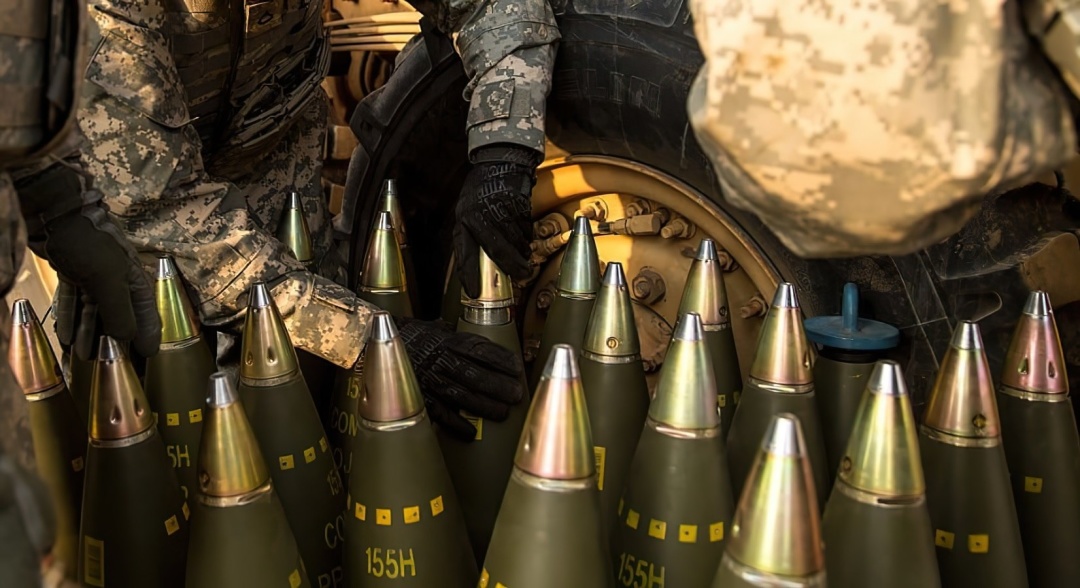
155-mm artillery shells
However, Mykhailo Zhirokhov points to a less obvious, but no less significant problem – the shortage of artillery gun barrels. “While 155 mm shells are manufactured in many places worldwide, finding a replacement for gun barrels is a challenge, given that these are manufactured almost exclusively in the USA,” he says. The wear of barrels can render American M109 self-propelled guns and M777 howitzers inoperable. This makes us search for alternatives, relying more on 105 mm L119 howitzers, for example. On top of that, according to the expert, without the Americans we will have to forget about using particularly the most capable artillery gun system currently in service with the Armed Forces of Ukraine – the 203 mm 2S7 Pion that has used only American-made shells since 2023.
Focus on own capabilities
Amid uncertainty, Ukraine, with the help of partners, has stepped up efforts for domestic production of strike capabilities. As Mykhailo Samus points out, “in this field, we are already reaching a level that allows us to act not only tactically, but also operationally and even strategically.” We are talking about cruise missiles, kamikaze drones and other means of destruction. “With sufficient investment and effective organization of production and logistics, these industries can be consistently expanded – both using domestic resources and with the support from European partners. Europe has the money, production capacities (as in Denmark, for example) and the necessary component technology, and so technically, this issue is fully solvable,” the expert added.
However, as Pavlo Narozhnyi warns, drones are not a panacea. “Even five hundred drones will not suffice to destroy a fortification of concrete, but an artillery shell will,” he says. This suggests that our domestically produced means have to complement rather than completely replace classic types of weapons.
CONCLUSION NOTES: CRITICAL BUT NOT FATAL
The suspension of US military aid is undoubtedly the most serious challenge for Ukraine since the start of the full-scale invasion. This blow is critical but not fatal. A review of the situation suggests that immediate and full replacement of US supplies is impossible, but the “end of the world” is not coming either.
The most acute short-term shortage is of Patriot PAC-3 interceptors for protection against ballistic threats. This poses a direct threat to Ukrainian cities and strategic facilities, and this capability has no full replacement for the time being.
In the medium term, the key challenges will be the lack of GMLRS missiles, which limits Ukraine’s ability to deliver quick and precise strikes, and the wear and tear of barrels for Western-supplied artillery guns, which can significantly reduce the Armed Forces of Ukraine’s firepower.
The way out of this crisis lies through a comprehensive strategy based on three pillars:
Political pressure and cooperation with Europe: persuading European partners to accelerate their own production efforts (SAMP-T, artillery shells, missiles), review their weapons stockpiles and transfer surpluses to Ukraine.
Investment in domestic defense industrial capacities: aggressive scaling up of programs like FrankenSAM, production of long-range drones, missiles and other strike systems.
Tactical adaptation: flexible change of battlefield tactics to alleviate the shortage of certain types of weapons, as was already the case during the “shell famine”.
The “American pause” is a painful but perhaps necessary maturity test for Ukraine and Europe. It forces us to leave the comfort zone of dependence on one, albeit the most powerful partner and build our own, more sustainable and autonomous security system. This path will take enormous resources, political will and technological breakthroughs. However, as the experience of this war suggests, the ability to adapt and ingenuity are no less valuable weapons than missiles and ammunition. It will take time and effort to cut the Washington knot, but we have no right to leave room for despair – only for pragmatic and quick actions.
Myroslav Liskovych, Tetyana Nehoda, Kyiv

